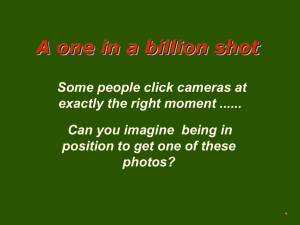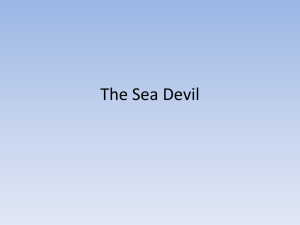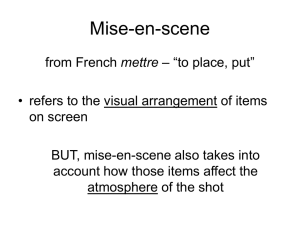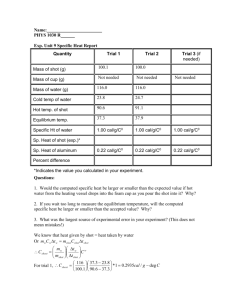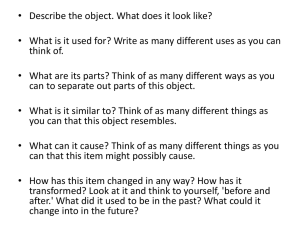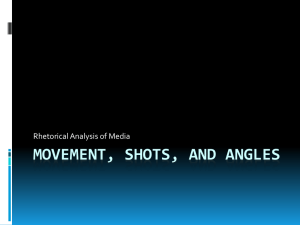CH. 6 Quiz
advertisement
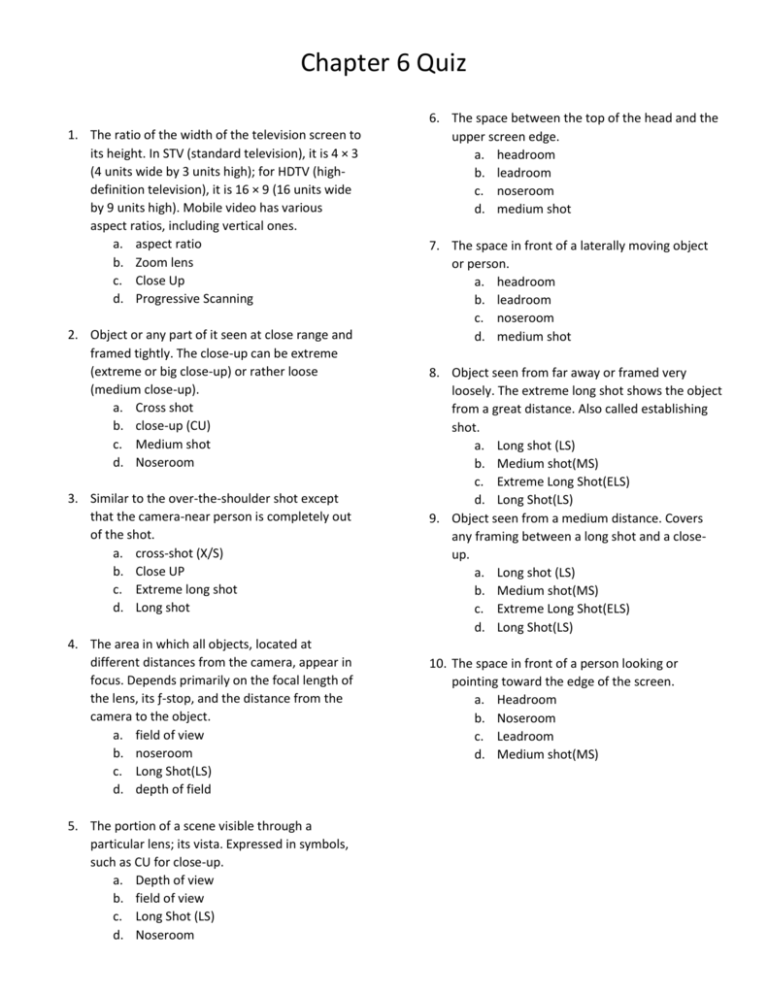
Chapter 6 Quiz 1. The ratio of the width of the television screen to its height. In STV (standard television), it is 4 × 3 (4 units wide by 3 units high); for HDTV (highdefinition television), it is 16 × 9 (16 units wide by 9 units high). Mobile video has various aspect ratios, including vertical ones. a. aspect ratio b. Zoom lens c. Close Up d. Progressive Scanning 2. Object or any part of it seen at close range and framed tightly. The close-up can be extreme (extreme or big close-up) or rather loose (medium close-up). a. Cross shot b. close-up (CU) c. Medium shot d. Noseroom 3. Similar to the over-the-shoulder shot except that the camera-near person is completely out of the shot. a. cross-shot (X/S) b. Close UP c. Extreme long shot d. Long shot 4. The area in which all objects, located at different distances from the camera, appear in focus. Depends primarily on the focal length of the lens, its ƒ-stop, and the distance from the camera to the object. a. field of view b. noseroom c. Long Shot(LS) d. depth of field 5. The portion of a scene visible through a particular lens; its vista. Expressed in symbols, such as CU for close-up. a. Depth of view b. field of view c. Long Shot (LS) d. Noseroom 6. The space between the top of the head and the upper screen edge. a. headroom b. leadroom c. noseroom d. medium shot 7. The space in front of a laterally moving object or person. a. headroom b. leadroom c. noseroom d. medium shot 8. Object seen from far away or framed very loosely. The extreme long shot shows the object from a great distance. Also called establishing shot. a. Long shot (LS) b. Medium shot(MS) c. Extreme Long Shot(ELS) d. Long Shot(LS) 9. Object seen from a medium distance. Covers any framing between a long shot and a closeup. a. Long shot (LS) b. Medium shot(MS) c. Extreme Long Shot(ELS) d. Long Shot(LS) 10. The space in front of a person looking or pointing toward the edge of the screen. a. Headroom b. Noseroom c. Leadroom d. Medium shot(MS) 11. Camera looks over the camera near person’s shoulder (shoulder and back of head included in shot) at the other person. a. Long shot (LS) b. Medium shot(MS) c. over-the-shoulder shot (O/S) d. Extreme Long Shot(ELS) 12. A directional screen force. There are graphic, index, and motion vectors. a. Z-axis b. Footcandle c. F-stop d. Vector 13. Indicates screen depth. Extends from camera lens to horizon. a. Z-axis b. Footcandle c. F-stop d. Vector
